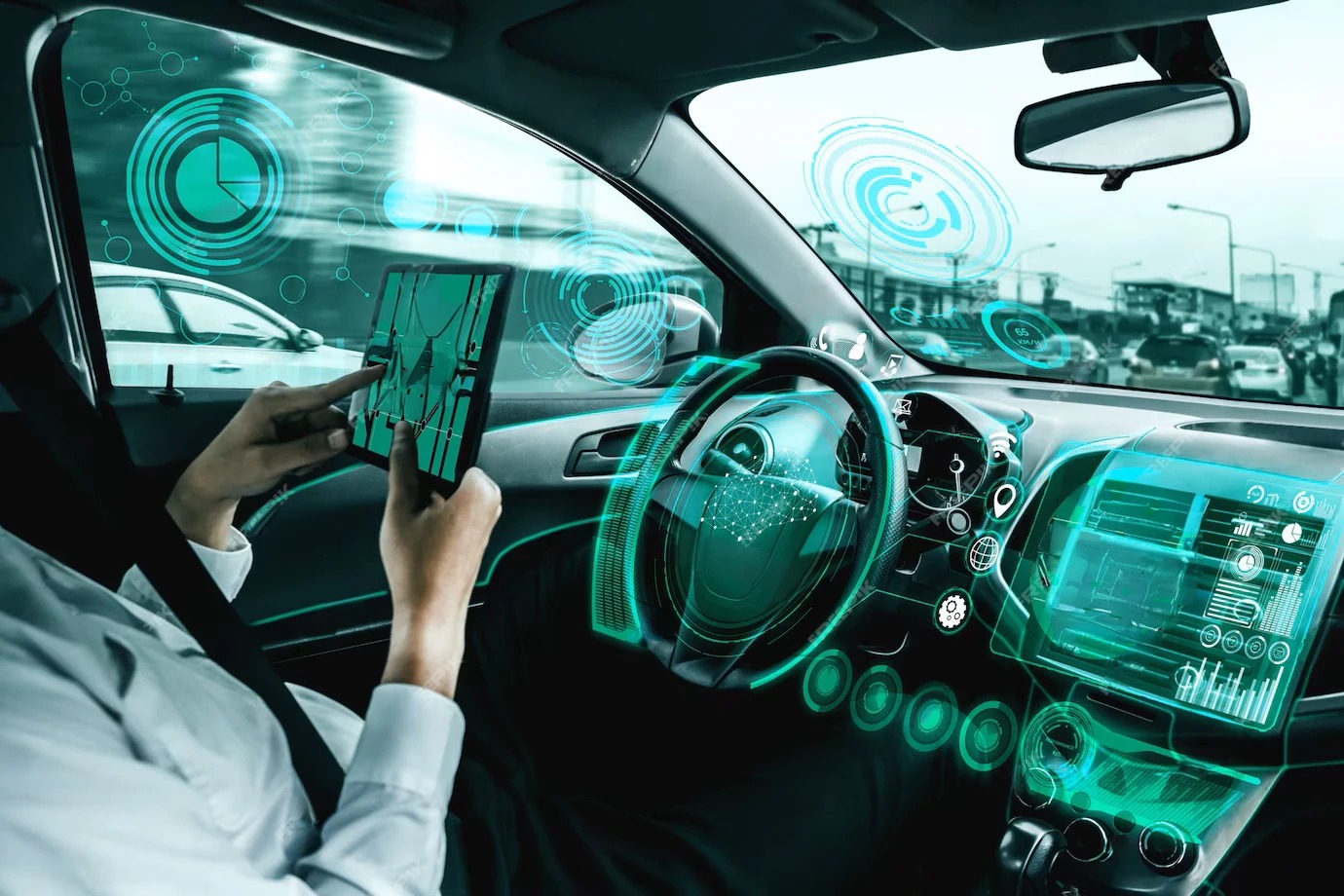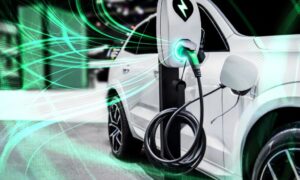The concept of autonomous vehicles (AVs) has fascinated many, often seen as key to a futuristic society.
Advances in AI, machine learning, and sensors are turning self-driving cars from fiction into reality.
By 2025, autonomous vehicles will revolutionize transportation, offering convenience and major innovations. They will transform urban mobility, improve safety, and promote sustainability across cities worldwide. Let’s explore how self-driving cars will reshape the future of transportation.
Enhanced Safety: Reducing Human Error on the Roads
Human error causes over 90% of traffic accidents worldwide, says the National Highway Traffic Safety Administration (NHTSA). Autonomous vehicles aim to change this statistic significantly. By 2025, AVs will feature sensors, cameras, and AI systems. These technologies are designed to reduce the chances of accidents.
Key Features:
- 360-Degree Sensor Coverage: Autonomous cars use LiDAR, radar, and cameras for 360-degree sensor coverage. These sensors continuously monitor obstacles, pedestrians, and other vehicles around them.
- Advanced AI Decision-Making: Self-driving cars use advanced AI to analyze real-time data from many sources. This enables faster decisions like emergency braking, lane changes, and collision avoidance.
- Vehicle-to-Vehicle (V2V) Communication: Self-driving cars can communicate with each other, sharing vital information like speed, location, and traffic conditions, leading to more coordinated and safer driving.
Impact:
AVs will significantly reduce traffic accidents caused by human factors like distracted driving, fatigue, and impaired driving. This not only has the potential to save thousands of lives but also reduce insurance costs and strain on emergency services.
Revolutionizing Urban Mobility: Less Congestion, More Accessibility
Autonomous vehicles will change the way we navigate cities, making transportation more efficient, accessible, and sustainable.
Key Features:
- Optimized Traffic Flow: Self-driving cars can communicate with traffic infrastructure, adjusting speed, and routes to minimize congestion. They will use real-time data to find the fastest, least congested routes, reducing overall travel times.
- On-Demand Ridesharing: As AVs become widely available, traditional car ownership may decline. Instead of owning a vehicle, people could hail autonomous taxis or ridesharing services at their convenience. This would help to reduce the number of cars on the road and alleviate congestion.
- First and Last Mile Solutions: Autonomous vehicles can be used to complete the “first and last mile” of journeys, providing efficient connections to public transit hubs. It would also be helping people reach their destination without needing to park or transfer to another mode of transport.
Impact:
In crowded cities, AVs will drastically reduce traffic congestion, improve air quality by promoting electric-powered autonomous fleets, and make transportation more inclusive for the elderly and disabled who may find it difficult to drive themselves.
Environmental Benefits: A Greener Future
One of the most promising aspects of autonomous vehicles is their potential to contribute to environmental sustainability. With an increasing emphasis on reducing carbon emissions and combating climate change, AVs are a key player in the push for a greener future.
Key Features:
- Electric-Only Autonomous Fleets: Many AVs being developed in 2025 will be fully electric, helping to reduce dependence on fossil fuels. By integrating autonomous systems with electric vehicles, cities can lower overall carbon emissions.
- Efficient Route Planning: Autonomous vehicles can communicate with each other and traffic infrastructure to find the most efficient routes, reducing energy consumption and eliminating unnecessary driving.
- Reduced Need for Parking: Autonomous vehicles will park themselves in optimized spaces, reducing the need for large, space-hogging parking lots. This could free up land for parks, homes, and other sustainable urban developments.
Impact:
By adopting electric and self-driving technology, we can significantly reduce air pollution, decrease reliance on traditional fuels, and build more sustainable cities. The environmental impact of AVs could be far-reaching, helping to create cleaner, greener transportation ecosystems.
Changing the Automotive Industry: Shifting Business Models
The rise of autonomous vehicles is also leading to major shifts in the automotive industry, from manufacturing to marketing and ownership models.
Key Features:
- New Business Models: Autonomous taxis and ridesharing will reduce personal car ownership demand, prompting manufacturers to change business models. Subscription services and shared ownership may rise as people prefer accessing AVs on demand
- Increased Investment in AI and Tech: Traditional automakers invest heavily in AI, robotics, and sensors to develop self-driving systems. Startups and tech giants like Waymo and Tesla push autonomous driving technology, creating fierce industry competition.
- Automation of Production: As AV demand grows, manufacturing plants may adopt fully automated production lines to build vehicles efficiently.
Impact:
This shift will create new business models in the automotive industry, generating jobs in tech, AI, and software development. Traditional dealerships may adapt by offering services related to autonomous vehicles and their technology. Car manufacturers will focus more on producing autonomous electric vehicles that meet changing consumer demands.
Social and Economic Impacts: Job Creation and Displacement
While autonomous vehicles hold the promise of a more efficient and safer world, they will also bring significant changes to the labor market. Certain jobs that rely on human drivers, such as truck drivers, taxi drivers, and delivery personnel, could be displaced by AV technology.
Key Features:
- Job Displacement and Re-Skilling: As automation replaces human drivers, there will be a need for new policies and training programs to help workers transition to new careers in tech, AI, and vehicle maintenance.
- New Employment Opportunities: The growth of the AV sector will also create new jobs, such as AV fleet management, data analysis, cybersecurity for self-driving systems, and maintenance of the vehicles themselves.
- Improved Quality of Life: With fewer people spending hours behind the wheel, workers may experience better work-life balance and more productive commuting options, such as remote work or using commute time for personal development.
Impact:
While there will be challenges in addressing job displacement, the rise of autonomous vehicles will create new industries and sectors that focus on tech, innovation, and sustainability. Efforts to re-skill the workforce will be essential to ensure a smooth transition.
The Road Ahead: Legal and Ethical Challenges
The future of autonomous vehicles in 2025 also comes with challenges, particularly regarding legislation, regulation, and ethical considerations.
Key Features:
- Regulation and Safety Standards: Governments and regulatory bodies will need to create clear policies for testing, deployment, and insurance of autonomous vehicles. These regulations will need to address safety standards, liability issues, and road infrastructure.
- Ethical Decision-Making: AVs will need to be programmed to make ethical decisions in emergency situations. How should a self-driving car behave if it must choose between two potentially harmful actions? These ethical dilemmas, known as the “trolley problem,” will require careful consideration.
Impact:
As autonomous vehicles spread, collaboration among governments, tech developers, and consumers is critical to address challenges and ensure safe deployment. This teamwork will help ensure ethical and equitable use of autonomous vehicles across different communities and regions.
Final Thoughts: A Game-Changer for Transportation
The future of autonomous vehicles brings benefits like improved safety, lower emissions, and smarter mobility solutions for modern cities. By 2025, self-driving cars will shift from novelty to necessity, becoming part of everyday transportation in many urban environments.
These vehicles will reshape commuting, reduce road fatalities, and influence how society views car ownership and mobility access. Car manufacturers, governments, and service providers must adapt to the new normal brought by autonomous vehicle integration.
Though challenges remain, the potential for positive transformation in safety, economy, and sustainability is too significant to ignore.
Autonomous vehicles are not just a trend—they represent a lasting shift in how we move, live, and work.

























